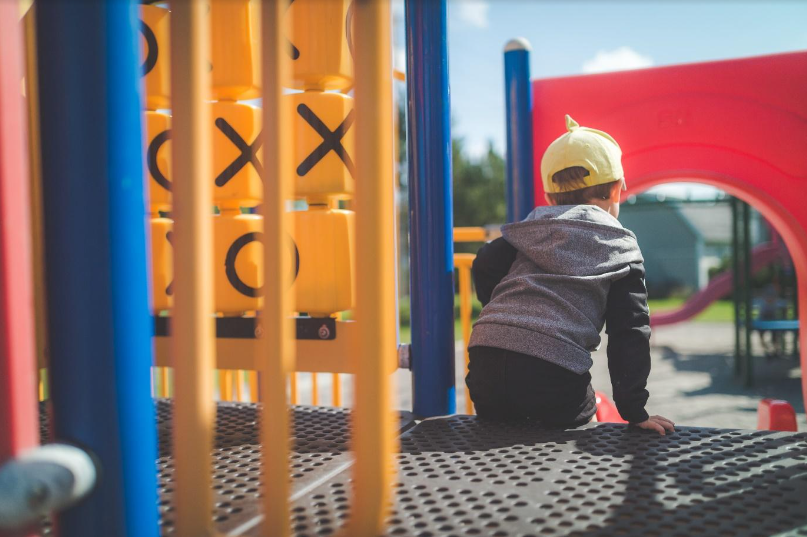Table of Contents
Playgrounds are fun and engaging spaces designed to stimulate cognitive and social development. Working with an experienced playground equipment designer yields the best results because the designer can leverage knowledge built over the years. Landscape architects, schools, municipalities, churches, and commercial playgrounds also find many other benefits in using reliable designers. Here are six reasons to hire playground equipment designers.
1. They Deliver Required Playgrounds
Playground ideas are many, and each organization or group has unique objectives, concerns, and budgets. The most important benefit of involving a playground equipment designer is their ability to meet client requirements. Experienced equipment designers can work with different budgets and ideas to design custom playgrounds optimized for specific groups.
Read Also: 5 Luxury Glass Door Styles to Choose From
Those looking to build a playground should visit an equipment designer to discuss their visions and needs. Equipment designers are professionals whose priority is to deliver insight, support, and customer satisfaction. The designers also know what’s needed to deliver a safe, functional, and reliable playground, as envisioned by the client.
2. They Understand Activity Zoning
Playgrounds host children of different ages, from toddlers to preteens. The designer can anticipate the different ages and recommend necessary equipment for the varied play needs. Working with an experienced designer ensures age-appropriate equipment and activity zoning to keep all playground users safe and engaged. Reputable playground designers also incorporate various play activities, including quiet, intermediate, and noisy zones.
Quiet zones include transitional zones, water play, sand play, dramatic play, comfort/social, and service zones. Intermediate noise zones feature the swings and hard surfaces. Noisy zones include the natural, gross motor play areas and big loose parts play zones. Equipment designers can help implement a playground with the right zones and activities for the expected users. Designers can also map out activity flow between zones.
3. They Help With Decision Making
Designing a playground is a huge undertaking and comes with many decisions. Organizations looking to build a playground must determine a budget, the target, lot/space, activities, equipment, brands, and more. Without a background in playground design, school boards, churches, and municipals will struggle to make the right decisions.
A playground equipment designer provides the knowledge base for consultation before making big decisions. The designer can help work around the budget to cover the core activities. Equipment designers can also offer professional insight and recommendations when choosing between materials and are readily available for post-design consultations.
4. They Provide Playground Estimates
Developing playgrounds involves two crucial estimates; square footage and cost. Square footage estimates should come early to determine the ideal number of zones during the design phase. The standard allocation is 60 sqft, but playgrounds with bigger lots can go for the best allocation of 200 sqft per child. Playgrounds need extra square feet to accommodate more zones and keep children safe, and equipment designers can optimize existing lots.
Cost estimates also help the playground owners determine how much the project will cost and what they can tweak. Cost estimation aims to maximize value by adding top-quality equipment and core activities while saving more. Most playground designers can estimate the cost of playground equipment, installation, surfacing, design fees, landscaping, grading, and more. Estimates are used in budgeting and planning to ensure a successful design.
5. They Understand Legal Requirements
Playgrounds must meet the latest safety, accessibility, and inclusivity regulations. The facility should also deploy best practices. Schools, churches, and others looking to offer a playground rarely keep tabs on the legal requirements until they’re ready to design. Working with an experienced company can cover the safety and legal aspects because playground equipment designers know the latest requirements.
Guidelines like the 2000 ADA Accessibility Guidelines for Play Areas require designers to develop playgrounds usable by individuals with disabilities. Most safety and inclusivity guidelines are the final rule. Playgrounds that don’t meet set standards and guidelines can be closed or fined for non-compliance. All hard surfaces, materials, distances, activities, and equipment must be safe and permitted for playground use.
6. They’re the Best Fit
Playground equipment designers are experts in the trade and understand everything from the early design phase to maintenance. Trustworthy playground designers have the skill, training, and experience to complete successful installations and deployment. Playground owners should work with reputable licensed designers and installers to guarantee the best results. Working with professional experts is the recommended approach.
Playground designers spend hours refining their techniques and creating practical, functional, and safe play areas. They offer the first stop when looking to create a playground and provide consultation services, quotes, and estimates. Professional playground designers also provide expert insights and implementation instructions. The designers specialize in developing playgrounds and are the best fit for such projects.
Playground Equipment Designer
Choosing the right equipment and designs for a specific school, community, or park can be challenging for many people. Involving a long-serving full-suite playground and park equipment supplier and installer can make the process effortless. Choose a reputable playground equipment designer to guarantee inclusive, accessible designs. The best designers have years of experience, a clean track record, and happy clients from past projects.

